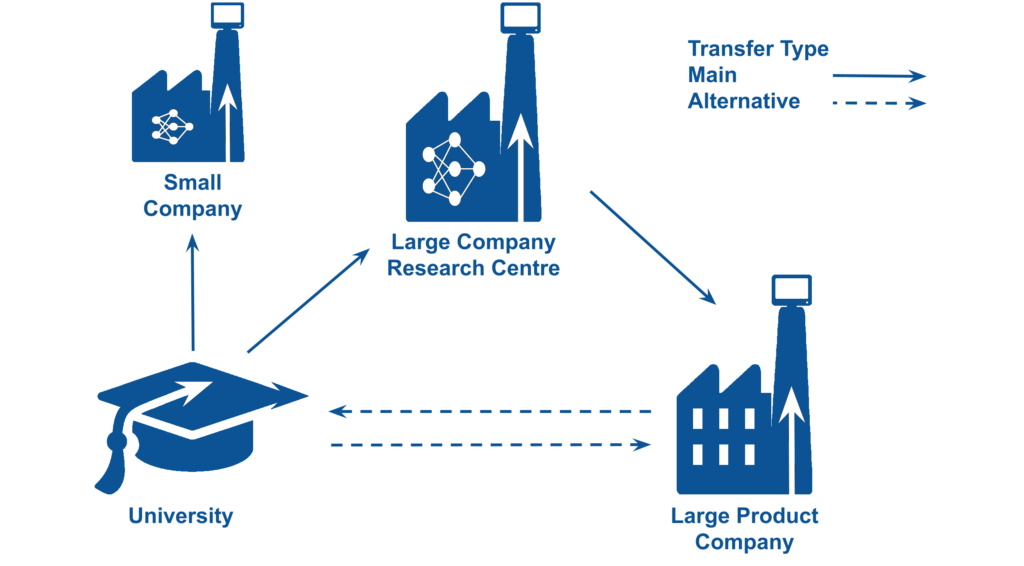“Consequently, the maturity of the technology is dependent on where in its life-cycle the transfer starts.”
Larsson and others, 2006
Where Technology Transfers?
We usually find that the development in the industry is quite fast compared to the university setups. However, it is also evident that the technology for the development in the industry is often ported from university, although many large industries develop their own technology.
These Swedish researchers (Larsson and others, 2006) analysed the successes and failures of technology transfer in between university and industry with the following cases of transfers from:
- research centre within a large company to a product company,
- university to a large product company and
- university to a small product company.

What are the factors that slows the transfer?
According to this research, even though all focus is given towards success, there might still be a failure that occurs due to not envisioned reasons. In the case study, when technology was supposed to transfer from University to Research Centre and then to Product Company, the complexity of the developed technology was the reason to slow or even just failure to transfer. The main reason was though that the “Product Company could not educate nor spare developers to take ownership of the source code” making the technology handover difficult.
Even though the university and research centre found that it was a very exciting project to solve the real-world problem and developed a solution, but product company could take only modest advantage of the developed technology. It is often found “there is often a gap between what is delivered and what the receiver requires in order to make use of the technology”, another killer reason. Besides, performing research is a risk-taking business, and many deep tech companies face several other challenges such as raising initial funding, networking and access to real-world markets etc.
Keys to Successful Technology Transfer
As mentioned in the first quote at the top, the early inception of the recipient party makes technology mature and perhaps consequently faster and more efficient transfer.
In a nutshell, according to Larsson and others:
Success factors identified from a transferer (academic or research) perspective:
• Continuous communication with the receiving party
• Demand that a receiving person is nominated early in the project
From an industrial perspective, the following success factors are identified:
• Someone championing the technology
• Clear interest in the technology
• Feeling part of the transfer

